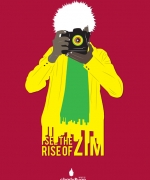Design in Zimbabwe - Brief History Of Zimbabwe
It was necessary to give a context of the period running up to the Independence in 1980.
Before independent, Zimbabwe used to be called Rhodesia.
- 1889 Great Britain recognised it as a self-governing territory.
- 1923 became self-governing British territory.
- British never protested against Southern Rhodesia Native Policy (modelled on repressive policies of SA).
- 1964 Southern Rhodesia sought independence after Prime Minister Ian Smith and his white supporters refused (first colony to do so besides American revolution).
- Black guerrillas launch Liberation War (Chimurega).
- 1966 UN imposed economic sanctions on Smith Government.
- 1979 after intermittent fighting Britain negotiated a peace settlement between the black and white factions.
- 1980 elections held on April 18, Robert Mugabe Head of the Zimbabwe African Union Patriotic Front (ZANU PF) became Prime Minister of a Socialist government.
- Name of country changed to Zimbabwe, which means House of Stone in the language of the Shona people who ruled this territory that is now Zimbabwe around 10000AD.
During colonial times, graphic design was almost non-existent. Any design at that time was done and aimed at the white minority. The black community was confined to the reserves and whenever they needed basic necessities they had to buy their goods through a window at the back of the shop. This was a way to segregate the blacks from the whites. So design played no part in what they bought because they had no choice. Design was very simple because the audience was not demanding and there was no competition. Still under economic sanctions in the 70’s there were many shortages and with the war reaching its climax, graphic design literally came to a halt. It is important to understand the history of Zimbabwe so we can compare it with what was happening in Europe during its development.
1980 – 2000
The 80’s was a transitional period. Everyone was excited about the end of the war and were looking forward to making new developments and building a new nation. With stability in the country designers who had fled the country in the 70’s returned to the country. One notable designer was Chaz Maviyane-Davies. He returned in 1982. Designers returning had high expectations. Design during the war had almost ceased to exit or was limited more to political propaganda. Most design of he 80’s was development work because the government policy direction was towards health and education. During the 80’s censorship was still rife. In 1985, asked by the government to design a poster celebrating five years of independence, Chaz produced an illegal version of the government owned newspaper which was largely propaganda piece and added as copy Pablo Neruda quote, “how is a blind man supposed to live when the bees are constantly bothering him”. On another occasion in 1988 he wrote an article suggesting that there was no difference between Rhodesia and Zimbabwe, that gaining independence, the country had merely substituted one set of eight words with another, the power structure remained the same. For these offenses he was blacklisted, reporters told him that nothing would be written about him no matter whether he won the Noble Prize or not.
Compared to the 1500’s when most censorship was carried out by the Church in Europe, now the government enforced it. But it was more lenient. During the 80’s there were no design studios, design was carried out by white owned multinational advertising agencies for example Barker McCormac. At this time except messengers, some clerical personal and the people who made for the staff, Chaz was the only black designer there. Though there was black majority rule, the design community was still predominantly white. In the late 80’s a fairly big black owned agency took its place among the old multinational companies. This gave more blacks confidence to change the status quo. With the realisation that more blacks were becoming more prosperous and learned and also wanted to enjoy luxuries enjoyed by the white minority, the face of design had to change. Design had to start catering for the black minority as well. But white privilege had not been completely banished. Chaz felt the hindering effects of white privilege when he wanted to start his own agency. The Advertising Association, which was controlled by the old guard white agencies, had strict rules that made it almost impossible for any start up designer to get a commission. You needed an equivalent of $100,000 for advertising spread out over 10 clients. If you could generate that amount of billing there simply weren’t enough clients to go round. They had figured out the structure knowing that blacks would never participate. Another problem of this era was lack of foreign currency, necessary to import equipment like photocopiers, computers, image setters and printing equipment. Through out the 80’s the old guard retained their import licenses to new applicants. This stopped a lot of business from starting up causing an exodus of the brightest and most committed out of the country to find opportunities and use their expertise elsewhere. This had negative effects on design. It resulted in a shortage of up to date technology. Services that took a day in the Western countries took seven days in Zimbabwe. The quality of finished produce was poor. Through out the 80’s the standard of design was very poor. I asked Jane Shepherd, lecturer at the Zimbabwe Institute of Vigital Arts (ZIVA) on her comment on design when she came into the country from England in 1898. She said “there was little if nothing that resembled contemporary graphic design in the 80’s. This low quality design was a sign of the economic blues in Zimbabwe.
The economy was still closed with no foreign currency, very little imports, and many shortages. Companies had monopolies, therefore there was no competition. Goods and services were shoddy, ‘Like it or Lump it’ was the attitude adopted by local printers. They were arrogant because designers could not take their works elsewhere. We must appreciate however that change does not occur over night but gradually things started to change. The Economic Structural Adjustment Programme (ESAP) was introduced in 1990 opening up the economy. Foreign currency became available, imports flooded in. Although the economy was open there were still shortages and everything was sold so advertising was not responsible for sales, design did not have to be good. This however changed in about 1992, South Africa imports created serious competition for Zimbabwe goods. Computers became available and the industry had to rejuvenate itself. Designers in search for better quality looked outside the country to Mauritius. This had a domino effect, in turn the local printers were losing clients so they had to jack up and provide better quality service. Throughout the industry from designers to printers, standards were raised to compete with the imports and outside industries. More and more local advertising agencies were sprouting up and competing with the old guard advertising agencies, and on the other hand, the design studios in Zimbabwe. Danes Design started in 1991 and it is been setting the standards in the design industry winning several awards for their work. The studio spearheaded by Mike Danes who was educated at the Harare Polytechnic and spent some few years working overseas. Danes passion for design is clearly manifest in the work he has done. Print quality has enhanced the design quality to the extent that some agencies from within the region send their jobs to be printed in Zimbabwe. That says a lot for an industry whereby only a few years ago we were taking jobs outside the country. With computers, design was no longer paste up work and had adopted more professional look. With export of goods there was a need for packaging that compete on an international market, printers now realised they needed to do a good job for the designer or he would go next door. But Zimbabwe’s unstable economy reared its ugly head again.
In 1998 Zimbabwe deployed troops to the Democratic Republic of Congo. Supporting these troops drained the economy leading to a severe domino effect in the country. It started with the devaluation of the dollar from about Z$12 to the US DOLLAR down to $37 in less than a year. This affected design in that the first thing companies cut during economic hardships is advertising,which in turn affects designers. Depreciation of the economy causes shortages and price hikes so consumers cut down on luxuries and stick to necessities, so design again does not play a role in convincing consumers because they have to buy. Advertising agencies also cut down on the number of designers. This retrenchment of designers’ motivated designers to start up freelancing and offering their services for much cheaper rates than the agencies. Another major blow to the economy came in the period before June Parliamentary Elections. There was wide spread violence throughout the country. New emphasis on land acquisition led to farm invasions by war veterans from the Liberation Struggle. White farmers were targeted causing them and some citizens to flee the country. More companies closed down, others threatened to close down. The current situation has led to more designers fleeing to neighboring countries, for example Botswana. As things stand today most big agencies are cutting down on designers, and most people feel that so long as the current government is in power the situation is going to keep deteriorating. Despite all these problems design over the past 20 years had taken large strides and the problems faced here in Zimbabwe are similar to those faced anywhere in the world.
Continue Reading
Development of Graphic Design in Zimbabwe (1980 - 2000)
Design in Zimbabwe - Brief History Of Zimbabwe
Design Education in Zimbabwe 1980 - 2000
Development of Graphic Design in Zimbabwe (1980 - 2000) - Interviews & Stats
Development of Graphic Design in Zimbabwe (1980 - 2000) - Conclusion





